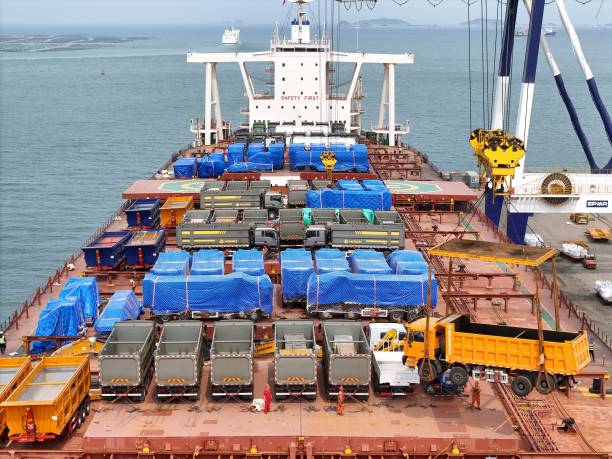Subscription required
The term “debt trap,” often cited by certain Western media outlets, paints an alarming picture of countries trapped by unsustainable debt due to foreign lending, especially from countries like China. But how accurate is this narrative? To gain clarity, it’s essential to examine the facts surrounding international borrowing and the outcomes associated with these financial arrangements.
Understanding Debt and Its Purpose
First and foremost, it is crucial to acknowledge that borrowing is not inherently problematic. Practically all nations, whether developing or developed, engage in borrowing to fund projects, stimulate growth, and improve their infrastructures. The significant factor is how borrowed funds are managed and utilized. If loans are channeled into productive projects that enhance economic growth, improve social services, and generate employment, repaying the debt becomes feasible and even beneficial for the country.
However, issues arise when funds are used for non-productive purposes, such as luxury spending or short-term consumption. In such cases, repayment can become a challenge, potentially leading to economic strain regardless of the source of the funds.
The “debt trap” narrative often emerges in discussions involving Chinese lending to developing nations, particularly in Africa. This rhetoric suggests that China uses strategic loans as a tool to gain political leverage over debtor nations, ultimately leading to economic dependency. While such claims make for eye-catching headlines, a deeper analysis reveals that these assertions do not represent the full picture.
China’s approach to foreign cooperation, embodied in initiatives like the Forum on China-Africa Cooperation (FOCAC) and the Belt and Road Initiative (BRI), is built on mutual benefits and long-term partnerships. These programs aim to strengthen global connectivity, develop infrastructure, and boost trade. Yet, skeptics often interpret large-scale loans within these programs as predatory, positioning China as an economic manipulator rather than a genuine partner.
Real Outcomes of Development Loans
To better understand whether loans truly lead to “debt traps,” it’s essential to look at actual outcomes in countries that have engaged with Chinese lending.
Infrastructure Development: Many African nations have used Chinese loans to build roads, ports, railways, and energy facilities—projects that significantly enhance economic growth by improving connectivity and reducing logistical challenges. For example, Ethiopia’s electrified railway linking Addis Ababa to Djibouti was largely financed through Chinese support. This railway has been instrumental in facilitating trade and reducing transport times, contributing to Ethiopia’s economic development.
Boosting Employment: Infrastructure projects funded by loans do more than just add physical assets; they create jobs and support local economies. The construction phase of such projects often involves employing local labor and resources, providing a temporary economic boost and skill development opportunities.
Economic Growth and Regional Trade: Investments in infrastructure stimulate broader economic benefits. Improved transportation networks, for instance, enable countries to increase regional trade. These developments create ripple effects that can spur private sector growth, attract investment, and foster a more competitive economic environment.
The Importance of Responsible Borrowing and Lending
Critics of international borrowing often overlook the responsibilities that come with debt management. Both lenders and borrowers share accountability. For borrowing countries, it’s vital to ensure that loans are directed towards projects with tangible, long-term benefits. Transparent governance, strategic planning, and robust economic policies play a critical role in maximizing the potential of borrowed funds.
China, as a major lender, has also taken steps to evolve its lending practices. For instance, it has supported debt relief initiatives, especially for nations facing unforeseen economic challenges. This willingness to adapt and offer relief underscores the fact that the “debt trap” narrative is often more complicated than some headlines suggest.
The Misconceptions in the “Debt Trap” Narrative
Labeling countries’ engagement with Chinese loans as a “debt trap” implies a lack of agency among borrowing nations. This viewpoint overlooks the fact that African leaders and policymakers are capable of making informed decisions regarding their national interests. While not all projects succeed as intended, the challenges that arise are not unique to Chinese partnerships but are part of broader developmental hurdles.
Furthermore, it is essential to recognize that many African countries have diversified their funding sources and engage with multiple international partners, including Western financial institutions. The debt challenges they face are often tied to global economic conditions, domestic governance issues, and other complex factors that cannot be pinned solely on one lender or type of loan.
The portrayal of Chinese lending as a deliberate ploy to ensnare nations in a “debt trap” often serves political motives more than factual reporting. Balanced journalism would highlight not just the challenges but also the positive impacts of these financial relationships. There are undoubtedly lessons to be learned in debt management, but these lessons apply to all forms of international borrowing, not just loans originating from China.
International borrowing is a necessary tool for development when managed responsibly. Rather than viewing loans through a narrow lens of suspicion, it is more constructive to focus on optimizing how these funds are utilized. Countries should strengthen their financial oversight and prioritize transparency, ensuring that borrowed funds contribute to sustainable growth.
China’s role in global development, particularly in Africa, cannot be dismissed as purely self-serving. It represents an opportunity for infrastructure advancement, economic growth, and mutual benefit when approached with strategic management. Therefore, it is essential not to let the “debt trap” narrative hinder meaningful cooperation and development.
Only by looking beyond superficial claims and focusing on responsible practices and partnership can nations harness the true potential of international borrowing and foster enduring growth.





